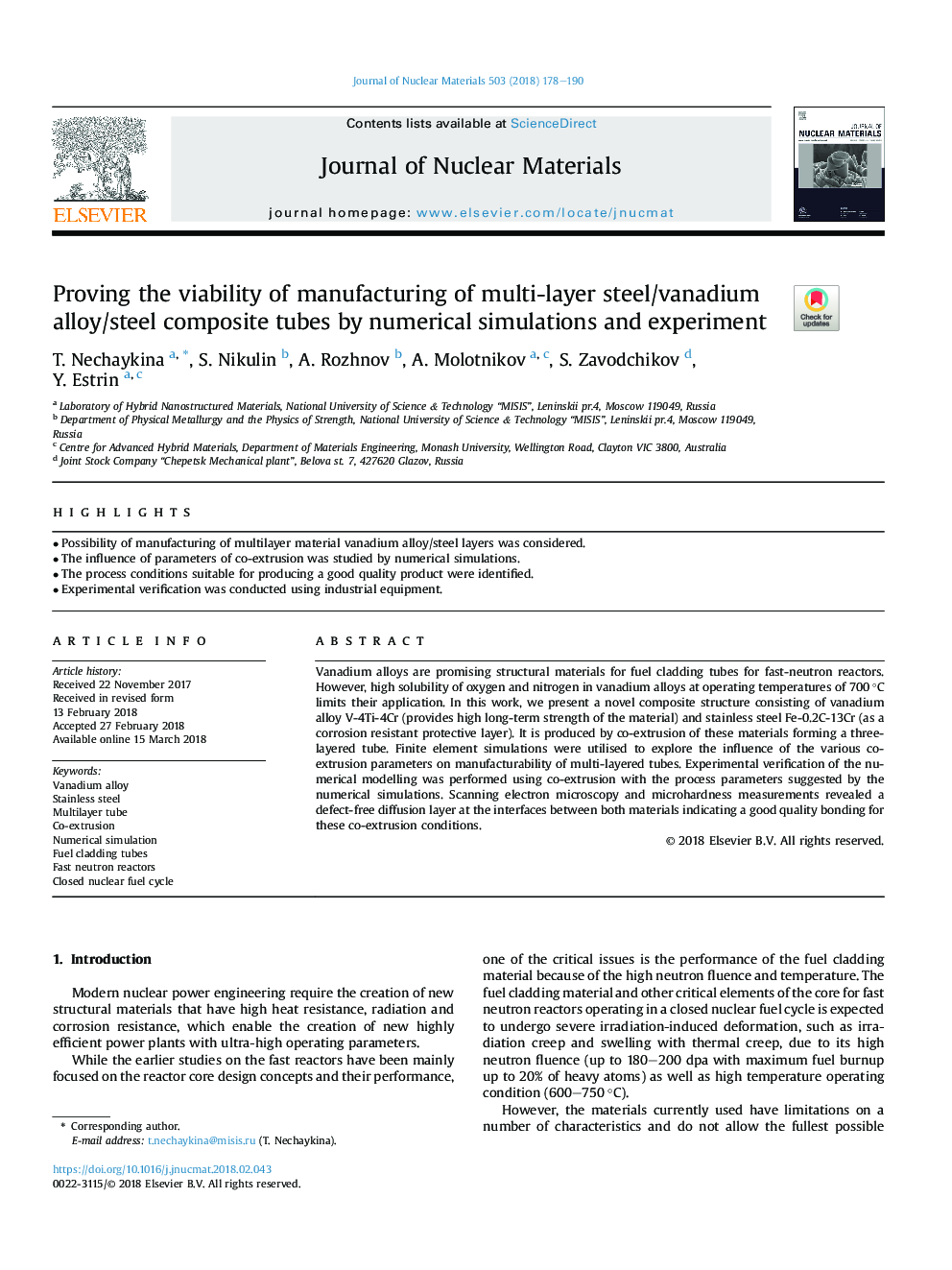| Article ID | Journal | Published Year | Pages | File Type |
|---|---|---|---|---|
| 7963262 | Journal of Nuclear Materials | 2018 | 13 Pages |
Abstract
Vanadium alloys are promising structural materials for fuel cladding tubes for fast-neutron reactors. However, high solubility of oxygen and nitrogen in vanadium alloys at operating temperatures of 700â¯Â°C limits their application. In this work, we present a novel composite structure consisting of vanadium alloy V-4Ti-4Cr (provides high long-term strength of the material) and stainless steel Fe-0.2C-13Cr (as a corrosion resistant protective layer). It is produced by co-extrusion of these materials forming a three-layered tube. Finite element simulations were utilised to explore the influence of the various co-extrusion parameters on manufacturability of multi-layered tubes. Experimental verification of the numerical modelling was performed using co-extrusion with the process parameters suggested by the numerical simulations. Scanning electron microscopy and microhardness measurements revealed a defect-free diffusion layer at the interfaces between both materials indicating a good quality bonding for these co-extrusion conditions.
Related Topics
Physical Sciences and Engineering
Energy
Nuclear Energy and Engineering
Authors
T. Nechaykina, S. Nikulin, A. Rozhnov, A. Molotnikov, S. Zavodchikov, Y. Estrin,
